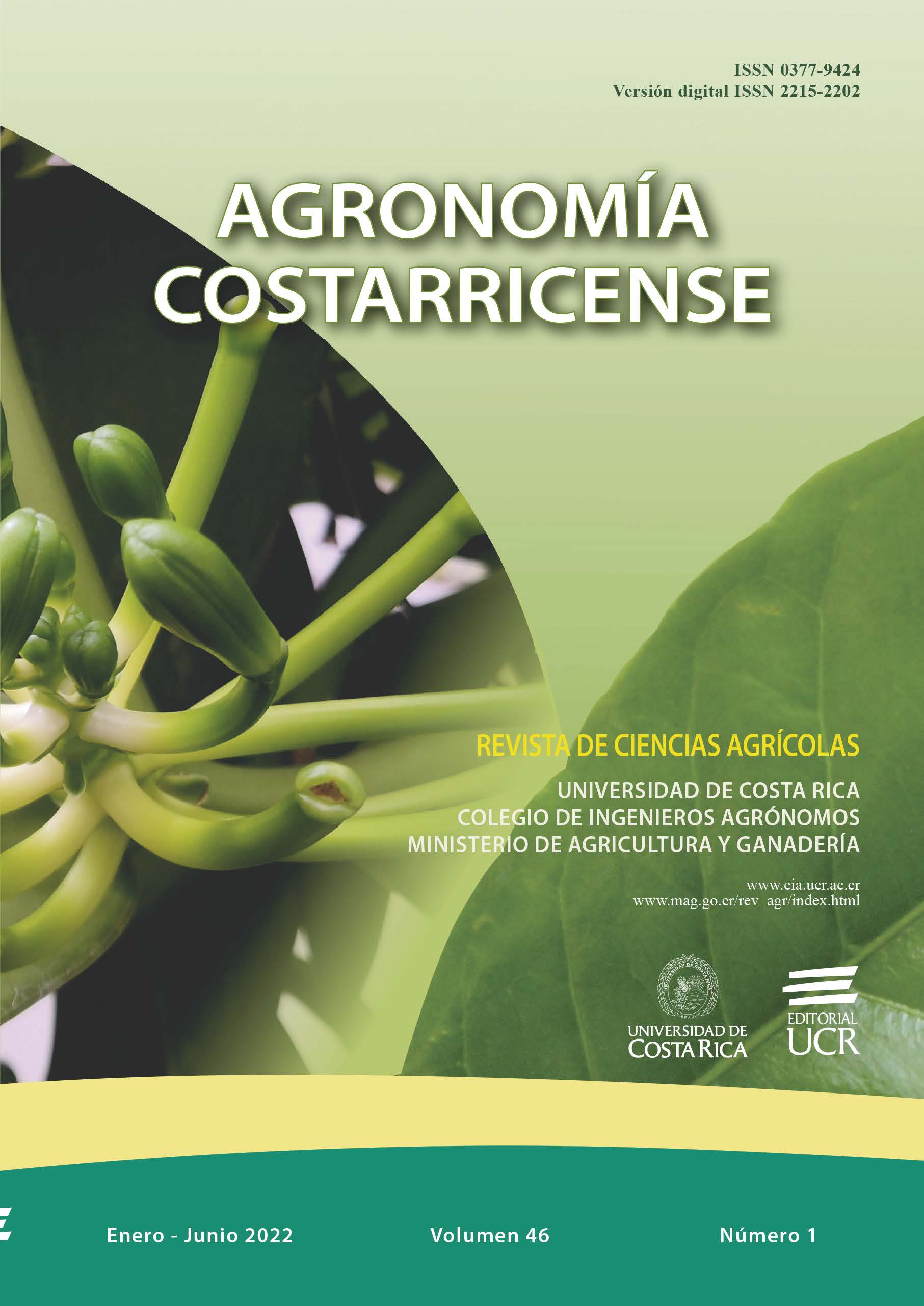Abstract
Introduction. Nitrous oxide is a highly relevant greenhouse gas. In livestock production systems, it is of a great importance to search for alternatives to mitigate N2O emissions, among which the use of plant covers capable of reducing nitrification process has been considered. Objective. Evaluate the dynamics of N2O fluxes in livestock soils covered with two improved grasses and doses of nitrogen fertilization (Úrea). Materials and methods. This research was developed in a livestock system in the middle valley of the Rio Sinú, in which N2O fluxes were monitored during a period of 12 months (November 2014 - 2015). An experimental design of randomized complete block design was used, in an arrangement of divided plots and 2 repetitions, where main plot corresponded to grasses (Brachiaria humidicola CIAT679 and Panicum maximum cv. Tanzania) and bare soil; and the subplots fertilization dose of N (0, 150, 300 kg.ha-1.year-1 N). Results. The N2O fluxes fluctuated according to the soil moisture content, associated with periods of great or less precipitation in the region. Coverage with the grass Brachiaria humidicola cv CIAT679 showed lower N2O emissions, while the doses of nitrogen fertilizers increased N2O emissions. These effects were partially attenuated by the use of the coverage with Brachiaria humidicola CIAT679. Conclusions. The results obtained indicate that nitrous oxide emissions in livestock systems could vary from the type of coverage and the doses of nitrogen fertilizer used. In our case, it was found that coverage with Brachiaria humdicola CIAT769 in livestock production systems reduces nitrous oxide emissions by more than 40% with maximum N soil application of 300 kg.ha-1.year-1.

